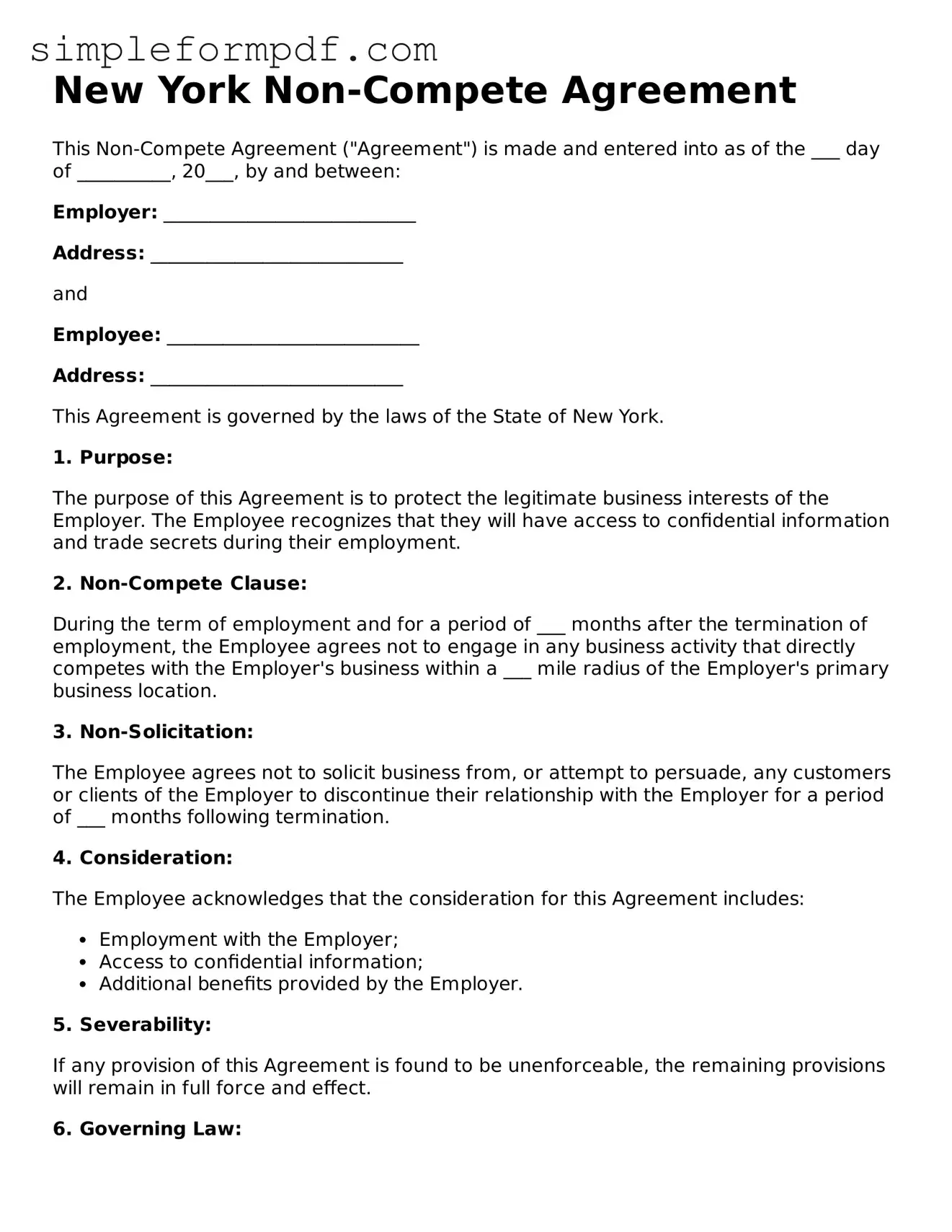New York Non-Compete Agreement
This Non-Compete Agreement ("Agreement") is made and entered into as of the ___ day of __________, 20___, by and between:
Employer: ___________________________
Address: ___________________________
and
Employee: ___________________________
Address: ___________________________
This Agreement is governed by the laws of the State of New York.
1. Purpose:
The purpose of this Agreement is to protect the legitimate business interests of the Employer. The Employee recognizes that they will have access to confidential information and trade secrets during their employment.
2. Non-Compete Clause:
During the term of employment and for a period of ___ months after the termination of employment, the Employee agrees not to engage in any business activity that directly competes with the Employer's business within a ___ mile radius of the Employer's primary business location.
3. Non-Solicitation:
The Employee agrees not to solicit business from, or attempt to persuade, any customers or clients of the Employer to discontinue their relationship with the Employer for a period of ___ months following termination.
4. Consideration:
The Employee acknowledges that the consideration for this Agreement includes:
- Employment with the Employer;
- Access to confidential information;
- Additional benefits provided by the Employer.
5. Severability:
If any provision of this Agreement is found to be unenforceable, the remaining provisions will remain in full force and effect.
6. Governing Law:
This Agreement will be governed by and interpreted in accordance with the laws of the State of New York.
7. Entire Agreement:
This Agreement constitutes the entire understanding between the parties concerning the subject matter herein and supersedes all prior agreements and understandings.
The parties hereby affirm that they have read this Agreement, understand it, and agree to its terms.
Employee Signature: ___________________________
Date: ___________________________
Employer Signature: ___________________________
Date: ___________________________
